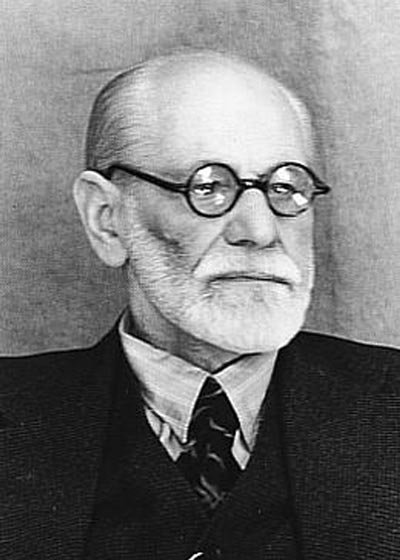
Sigmund Freud was born of Jewish parentage in Freiburg, Moravia, Austria-Hungary (now the Czech Republic), the first of seven children. His mother Amalia Nathansohn was twenty years younger than his father, the wool merchant Jakob Freud; Amalia was his third wife. The family moved in 1860 to Vienna, where discriminating laws against the Jews had been canceled during 1850s and 1860s. Freud studied medicine at the University of Vienna under Josef Breuer, a Viennese physician.
From 1882 to 1886 Freud worked at the General Hospital, and experimented among others with cocaine, also using it himself. He went to Paris in 1885 to study under Jean Martin Charcot at the Salpetrière Hospital. There the hypnotic treatment of women, who suffered from a medical state called ‘hysteria’, led Freud to take an interest in psychiatry. After returning to Vienna Freud married Martha Bernays; they had six children. In 1886 Freud opened his private practice. Their address from 1891 was Berggasse 19, where the family lived until 1938.
By 1896 Freud had found the key to his own system, naming it psychoanalysis. In it he had replaced hypnosis with “free association.” In 1900 Freud published his first major work, The Interpretation of Dreams, which established the importance of psychoanalytical movement. One of Freud’s most famous early failures happened in the same year. In October he began treating an 18-year-old woman, Ida Bauer, better known by the pseudonym Dora. After 11 weeks, she stopped treatment, leaving much of the analytic work undone.
In 1902 Freud was appointed Ausserordentlicher Professor, and in 1905 appeared Three Essays on the Theory of Sexuality. At the suggestion of a disciple, Freud founded in 1902 the Psychological Wednesday Society, later transformed into the Viennna Psychoanalytic Society.
In 1909 Freud travelled with Carl Jung in the United States, lecturing and meeting among others American philosopher and psychologist William James. Jung’s close collaboration with Freud lasted until 1913. Jung had become increasingly critical of Freud’s exclusively sexual definition of libido and incest. The publication of Jung’s Symbols of Transformation (1912) led to a final break.
By the beginning of the 1920s, Freud’s writing had given rise to several associates of psychoanalysis. In his own life he was nearly muted: a series of operations for mouth cancer, beginning in 1923, made him unable to perform in public. He published Group Psychology and the Analysis of the Ego (1921), The Future of an Illusion (1927), and Civilization and Its Discontents (1929), all dealing with large cultural issues. In spite of the recognition of his work Freud was never awarded with the Nobel Prize, but in 1928 an attempt was made for his nomination.
After Hitler’s seizure of power, psychoanalytic work came to an end in Germany, and Freud’s books were burnt in Berlin. His views also were condemned in the USSR . At the request of the league of Nations, Freud collaborated with Albert Einstein in writing Why War? (1933) When Nazis invaded Austria, Freud was permitted to move to London after paying a large ransom. He died of throat cancer three weeks after the outbreak of WW II in 1939. He died on September 23, 1939. His last book, Moses and Monotheism (1939), was completed in England. In it Freud dismissed Jung’s concept of a ‘collective unconscious’ and offered instead his own idea of ‘archaic inheritance’.
Freud’s theories have been questioned by many scholars. The knowledge of brain’s electrical behaviour have brought new views in the interpretation of dreams. Freud, along with Karl Marx (1818-1883) and Albert Einstein (1879-1955), revolutionarized modern Western thinking.
